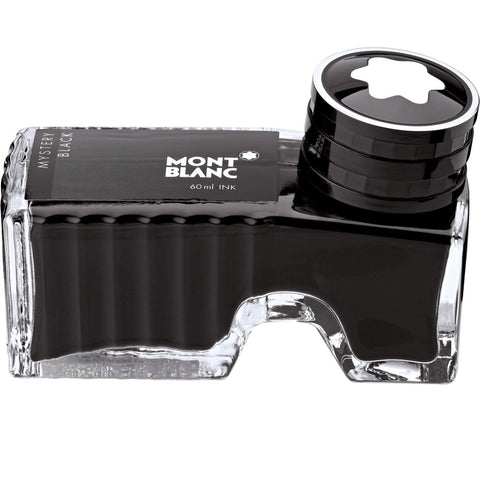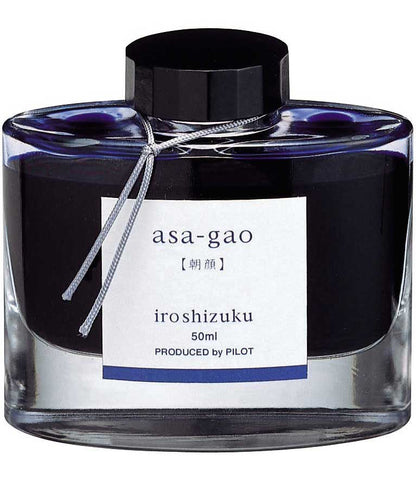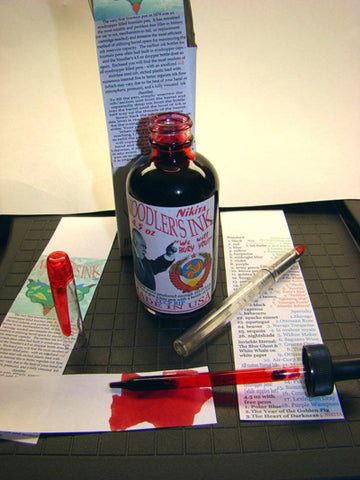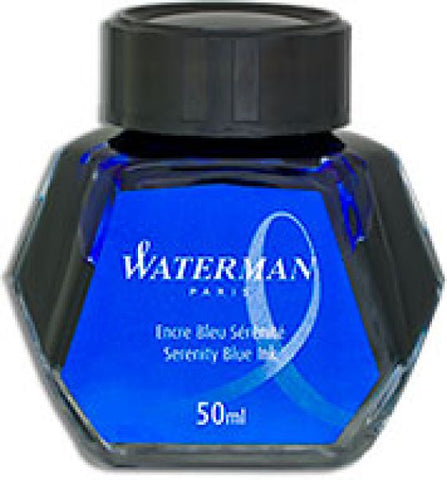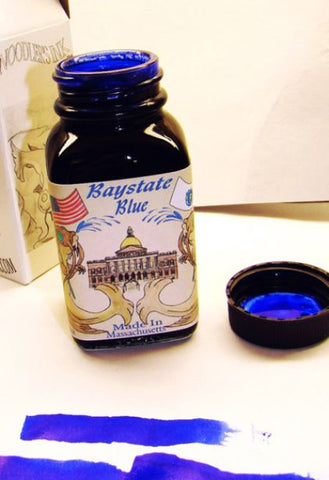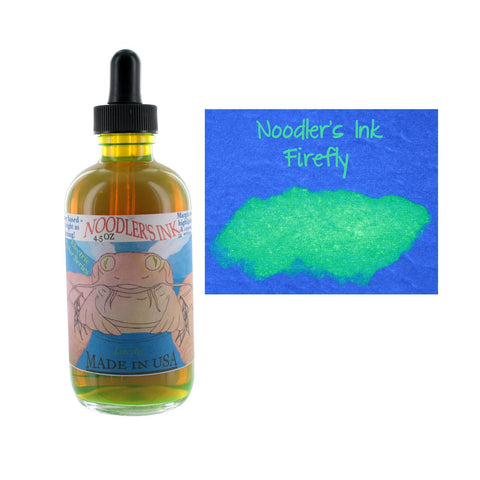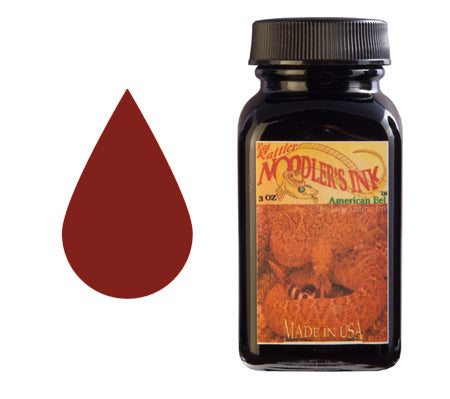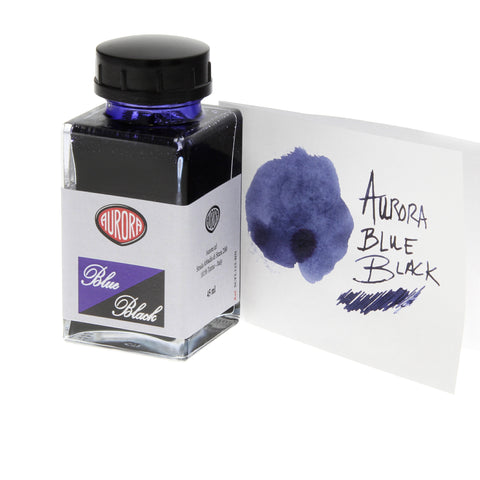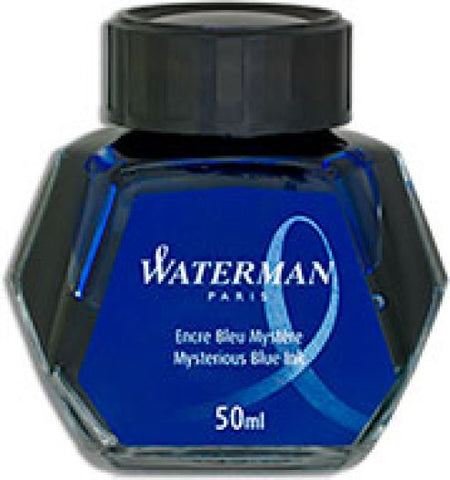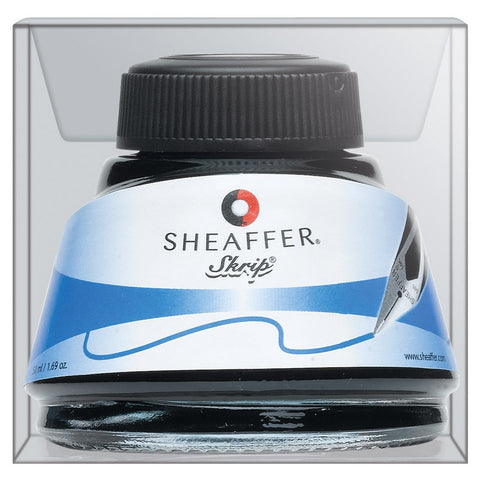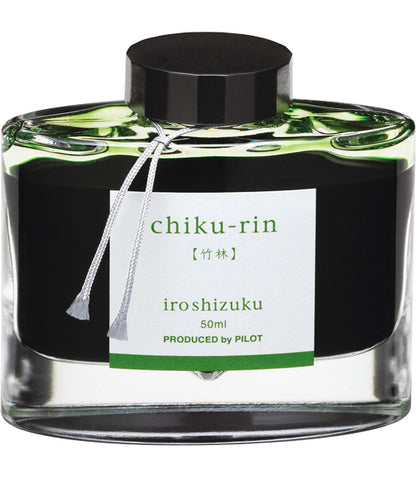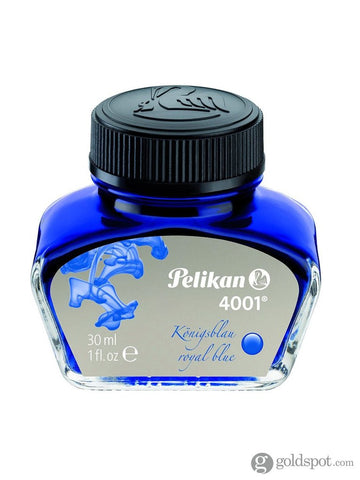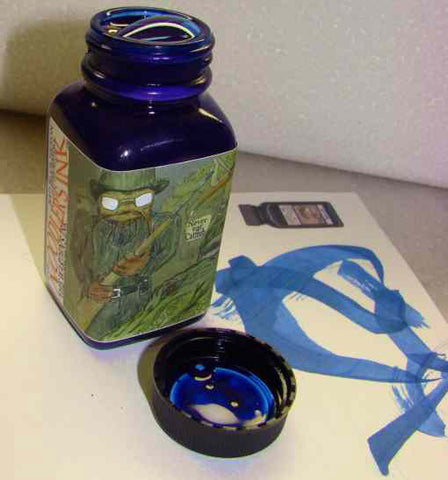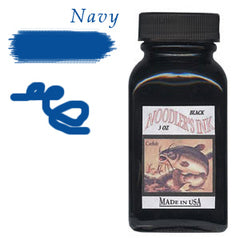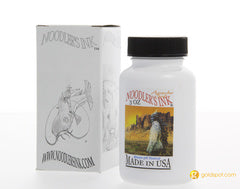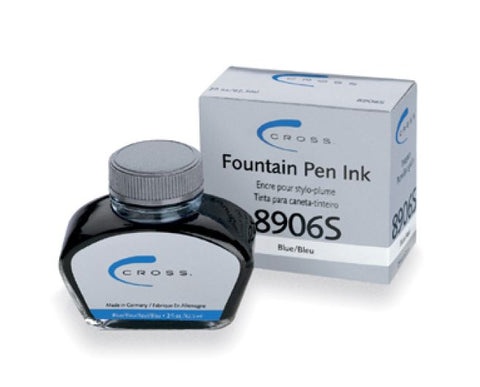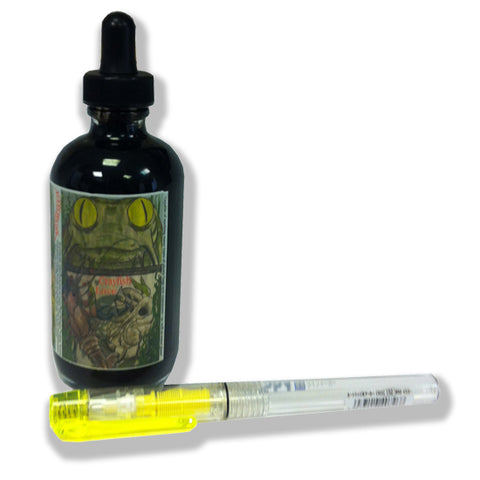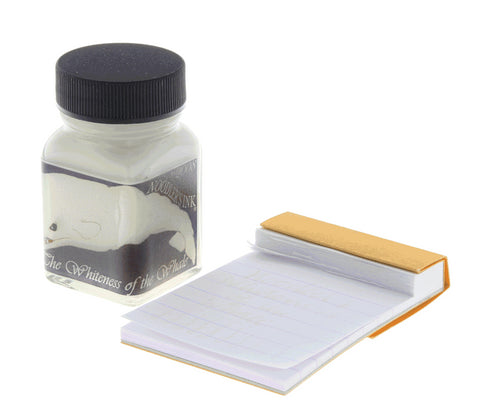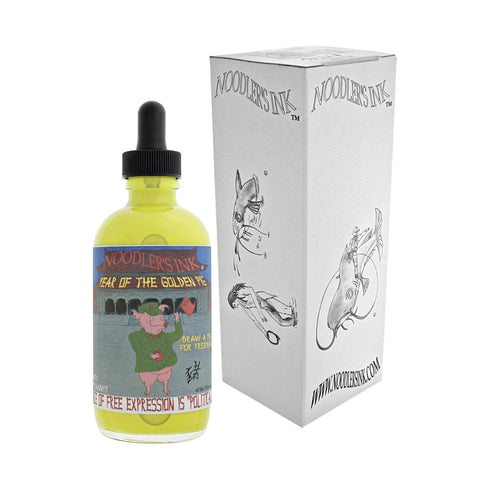Bottled Ink
RefillFinder is your premier destination for exploring a diverse selection of high-quality fountain pen bottled inks, catering to writing enthusiasts and collectors seeking the perfect ink for their beloved pens.
With a wide array of colors, brands, and specialty inks available, RefillFinder offers something for every taste and style. Whether you prefer classic blues and blacks, vibrant purples and greens, or shimmering metallics and sheening inks, a perfect match awaits your discovery.
The website's intuitive interface and detailed product descriptions make navigating easy, ensuring you find exactly what you need. RefillFinder's commitment to sourcing from trusted ink manufacturers guarantees that you receive visually stunning ink that performs flawlessly in your pen, bringing your writing to life.
What Is Fountain Pen Bottled Ink?
Fountain pen bottled ink refers to specially formulated ink designed for fountain pens, typically presented in glass or plastic bottles, offering a wide array of colors and properties to cater to diverse writing preferences and styles.
The fountain pen bottled ink formulation is meticulously crafted to ensure smooth and consistent flow, preventing clogging or drying in the pen's intricate mechanism. The ink typically comprises dyes, pigments, solvents, and additives to achieve the desired color vibrancy, saturation, and drying time.
Some formulations are also tailored for specific paper types, providing varying levels of water resistance and feathering.
Regarding packaging, fountain pen ink bottles are designed with functionality and elegance in mind. They feature wide openings and internal reservoirs to facilitate easy pen filling while preserving the ink's integrity. Some premium inks are presented in ornate glass bottles with vintage-inspired design elements, adding a touch of sophistication to the writing experience.
The variety of colors available in fountain pen ink is astounding, ranging from traditional blues and blacks to vibrant reds, greens, and purples. Each color exhibits unique shading and sheening properties, imparting depth and character to handwritten text. Fountain pen ink enthusiasts enjoy experimenting with shimmering, shading, and sheening inks, adding an element of luxury and personal expression to their writing.
Why Use Fountain Pen Bottled Ink?
Fountain pen bottled ink presents a compelling choice for enthusiasts due to its vibrant color options, smooth writing experience, and the ability to personalize one's writing with unique ink characteristics, making it a preferred choice for discerning writers and pen enthusiasts.
Regarding color options, fountain pen bottled inks offer an extensive range of vibrant hues that add depth and personality to every stroke. Whether one prefers a classic blue-black or a dazzling emerald green, there is a shade for every mood and occasion.
The smoothness of writing with fountain pen ink is unparalleled, as the liquid flows effortlessly onto the paper, resulting in a luxurious writing experience that cannot be replicated by ballpoint or gel pens. This attribute enhances the writing process and creates a unique tactile sensation that many enthusiasts find immensely satisfying.
The ability to personalize writing with unique ink characteristics is a defining feature of fountain pen bottled inks. From shading and sheening to shimmering and shading, the customization options are endless, enabling writers to infuse their expression with a touch of individuality and creativity.
What Are The Advantages Of Fountain Pen Bottled Ink?
The advantages of fountain pen bottled ink encompass a spectrum of benefits, including vibrant color options, enhanced writing experiences, and the ability to tailor ink properties to suit individual writing styles and preferences.
One of the most appealing aspects of fountain pen bottled ink is the range of vibrant color options available. From deep, rich hues to bold, vibrant shades, the ink's vibrancy adds depth and character to every stroke, enhancing the visual appeal of the written text.
Fountain pen bottled ink can enhance writing experiences. It provides a smooth and consistent flow, reduces hand fatigue, and offers a more controlled writing experience. This can lead to improved handwriting and overall writing enjoyment.
Another significant advantage is the flexibility for customization. Whether adjusting the ink flow, experimenting with different nib sizes, or creating unique ink blends, bottle ink allows users to tailor their writing experience to their preferences. This fosters a personal connection with the craft of writing.
What Are The Disadvantages Of Fountain Pen Bottled Ink?
Despite its allure, fountain pen bottled ink may pose challenges such as potential mess during refilling, longer drying times, and the requirement for additional accessories like converters, which are essential considerations for users seeking convenience and practicality.
Refilling a fountain pen with bottled ink can sometimes lead to accidental spills or ink stains, particularly for those new to the art of filling fountain pens.
This can be a major drawback for users prioritizing cleanliness and precision in their writing tools. Moreover, fountain pen bottled ink often requires more time to dry than other types of ink, which may not be suitable for users who require quick-drying capabilities.
The need for extra accessories like converters, used to draw ink from a bottle into the pen, can be considered an inconvenience as it involves additional costs and maintenance.
What To Consider Before Purchasing Fountain Pen Bottled Ink?
Before purchasing fountain pen bottled ink, assessing factors like pen compatibility, color preferences, drying times, water resistance, ink behavior, and cost is crucial, ensuring a well-informed selection that aligns with your writing needs and expectations.
Pen compatibility is pivotal, as some inks may clog certain pen types. Consider color choices, too, as a vast array of hues and shades express your individuality.
Look for inks with quick-drying properties to prevent smudging. For professional documents, water resistance is a valuable trait. Understanding the ink behavior is vital, whether it flows smoothly or has shading qualities.
Evaluating the cost relative to quantity and quality is essential in maintaining an economical yet satisfying ink supply.
Type of Pen
When evaluating ink options, the type of pen plays a pivotal role, as different fountain pens may require specific ink formulations to ensure optimal performance and longevity of the pen's components.
For example, fountain pens with steel nibs generally tolerate a wider range of inks, while gold nibs may necessitate gentler formulations to prevent corrosion and maintain their integrity.
Rollerball pens often have their own set of compatible inks due to their unique ink flow mechanisms.
Considering the pen type when selecting ink is crucial in preventing issues such as clogging, feathering, or bleeding, which can impact writing quality and overall user experience.
By understanding the pen type and related ink compatibility, individuals can make informed decisions that enhance the writing experience and preserve the condition of their writing instruments.
Color and Shade
Color and shade preferences are highly subjective, and while some users may favor vibrant, bold hues, others may lean towards subtle, muted tones, emphasizing the need for a diverse ink color palette to cater to varying aesthetic and functional requirements.
Understanding individual color preferences is imperative as it directly influences the user experience.
Color psychology plays a crucial role in the emotional response to ink. For instance, warm tones like red and orange often evoke energy and passion, while cool hues like blue and green are associated with calmness and tranquility.
The diversity in ink hues allows for customization, enabling users to express their personality and enhance the visual impact of their work.
Diverse ink color options, from creative expression to professional communication, accommodate different writing purposes.
Drying Time
Drying time is critical, as users with specific writing habits and paper types may seek inks with quick-drying properties to prevent smudging and ensure consistent writing performance.
When selecting the right ink, it's important to understand the different drying times associated with various types of inks.
For instance, quick-drying inks are ideal for left-handed writers who may drag their hands over the paper, while those using thinner or more absorbent paper may also benefit from faster-drying inks to avoid bleed-through.
The environment in which the writing takes place should be considered. Office settings may demand quick-drying inks to avoid accidental smudges, while artists and calligraphers might prioritize inks with longer drying times for blending and shading purposes.
Therefore, looking for inks that match specific user habits and paper considerations is vital to enhance the overall writing experience.
Water Resistance
Water resistance is crucial for users who require document longevity and protection against accidental spills or moisture exposure, making it a vital consideration in the ink selection process.
When selecting an ink, the water-resistant property ensures that the documents remain legible and undamaged, even when subjected to wet conditions. This durability is especially important for important records, archival materials, or documents that must withstand time.
The water resistance of ink also reduces the risk of smudging and bleeding, which can compromise the integrity of the written content. Therefore, when evaluating ink choices, prioritizing water resistance is imperative for ensuring the longevity and protection of your documents.
Feathering and Bleeding
The issues of feathering and bleeding can impact the overall writing quality, prompting users to prioritize inks that exhibit minimal feathering and bleeding tendencies for a clean and precise writing experience.
Feathering occurs when ink spreads into the paper fibers, causing blurred and fuzzy lines. This not only affects the legibility of the writing but also diminishes the neatness of the overall composition.
On the other hand, bleeding happens when ink seeps through the paper, resulting in unsightly scars and smudges, potentially ruining the appearance of the written material. To avoid these issues, writers and enthusiasts seek inks with excellent control over feathering and bleeding, ensuring their writing appears crisp and professional.
Price
Price considerations are integral to the ink selection process, as users seek a balance between quality and affordability, ensuring that the chosen ink aligns with their budgetary constraints and value expectations.
When choosing ink, it's essential to weigh the cost-effectiveness against the desired performance and longevity. Users often look for inks that offer a reasonable price point without compromising on vibrant colors, fade resistance, and compatibility with their specific writing instruments.
The cost per volume or page yield plays a crucial role in decision-making, especially for those who engage in extensive writing tasks. Considering these factors helps individuals make informed choices that align with their budget and desired ink characteristics.
How do you choose the right fountain pen with bottled ink?
Choosing the right fountain pen bottled ink involves evaluating your pen type and nib size, understanding your writing style and preferences, and leveraging reviews and ink samples to make an informed and satisfying selection.
When selecting ink for your fountain pen, it's essential to consider factors like ink flow, shading, water resistance, and lubrication.
For broader nibs, consider using shading inks to highlight the bold strokes. A smooth writing experience can be enhanced with lubricated inks, while water-resistant inks are suitable for documents or signatures.
Your writing style determines the ink properties that best suit your needs. For instance, selecting bold and vibrant inks would be ideal if you prefer calligraphy.
Consider Your Pen Type and Nib Size
Your pen type and size are essential, as different pens and nibs may interact uniquely with specific ink formulations, influencing writing performance, color representation, and overall user satisfaction.
When selecting ink for your writing instrument, it's important to consider the pen type and nib size for a harmonious experience. For broader nibs, such as stub or italic nibs, inks with higher saturation are recommended to showcase their line variation and shading effects. On the other hand, finer nibs like extra fine or fine nibs work best with well-behaved inks that flow smoothly and prevent clogging in the tight spaces of their tips.
Determine Your Writing Style and Preferences
Understanding your writing style and preferences is crucial, as it allows you to pinpoint ink properties that align with your desired writing experiences, including factors like color, flow, and drying characteristics.
Your individual preferences play a significant role in choosing the right ink. For instance, if you prefer a smooth flow and quick drying, opting for quick-drying inks with consistent flow can greatly enhance your writing experience.
Similarly, the color of the ink can reflect your personality and mood, adding an extra layer of depth to your written expression. Understanding and choosing the perfect ink for your writing style and preferences can elevate your overall satisfaction with the writing process.
Read Reviews and Test Samples
Engaging with reviews and testing ink samples gives users the power to gather firsthand insights and experiences, aiding in identifying inks that resonate with their writing needs and performance expectations.
The user feedback and sample testing provide valuable information on color vibrancy, saturation, flow, and drying time, guiding individuals to select inks that best suit their writing style and preferences.
By immersing in diverse ink samples, individuals can assess aspects like shading, sheen, and water resistance, leading to a more well-considered choice process.
The collective experiences shared by the community through reviews help users anticipate how different inks perform over time, offering practical insights for long-term satisfaction.
How do you properly store and care for fountain pen bottled ink?
Properly storing and caring for fountain pen bottled ink involves safeguarding it from direct sunlight and extreme temperatures, securely sealing the bottles, and periodically agitating the ink to maintain consistency and quality.
When storing fountain pen ink, choosing a location away from direct sunlight is essential, as UV rays can cause the ink's color to fade over time. Extreme temperature fluctuations can also affect the ink's properties, so keeping it in a cool, dark place is advisable.
Tightly sealing the ink bottles is crucial to prevent evaporation and maintain the ink's saturation. Ensure the caps are securely closed after each use to create an airtight seal to preserve the ink's integrity.
Regularly agitating the ink, especially if it has been sitting for a while, helps evenly distribute any settling pigments and resins, ensuring a consistent ink flow and color.
Buy Your Fountain Pen Bottled Ink at RefillFinder
Elevate your writing experience and indulge in a diverse range of fountain pen bottled inks at RefillFinder, where quality, selection, and exceptional service converge to cater to the ink aficionados and connoisseurs within the writing community.
With a carefully curated collection of fountain pen-bottled inks, RefillFinder offers an extensive array of colors, from vibrant hues to subtle and sophisticated tones, allowing writers to express their creativity through every stroke.
The commitment to quality ensures that each ink delivers a smooth and consistent flow, enhancing the writing experience with every use.
What sets RefillFinder apart is the remarkable variety of inks, the personalized attention, and the exceptional service provided to every customer.
Whether you seek timeless classics or innovative, avant-garde colors, the expertise and dedication of the RefillFinder team elevate the process of acquiring fountain pen inks into a delightful and engaging experience.
Frequently Asked Questions
What is fountain pen bottled ink, and should you buy it?
Fountain pen bottled ink is a type of ink specifically made for use with fountain pens. Whether or not you should buy it depends on your preferences and needs.
What are the benefits of using fountain pen bottled ink?
Fountain pen bottled ink tends to be of higher quality and offers a wider range of colors than other types of ink. It also allows for more unique and customizable writing experiences.
Is fountain pen bottled ink more expensive than other types of ink?
Fountain pen bottled ink can be more expensive than other types of ink, but it also tends to last longer and offer a better writing experience. Ultimately, the cost will depend on the brand and quality of the ink.
Can any fountain pen use bottled ink?
Most fountain pens are compatible with bottled ink. However, it is always best to check the manufacturer's recommendations to ensure compatibility and avoid potential damage to your pen.
Are there any potential drawbacks to using fountain pen bottled ink?
Some potential drawbacks of using fountain pen bottled ink include a higher upfront cost, potential messiness when refilling the pen, and limited availability of certain colors or brands. It is important to weigh these factors before making a purchase.
Back to Top: Fountain Pen Bottled Ink

